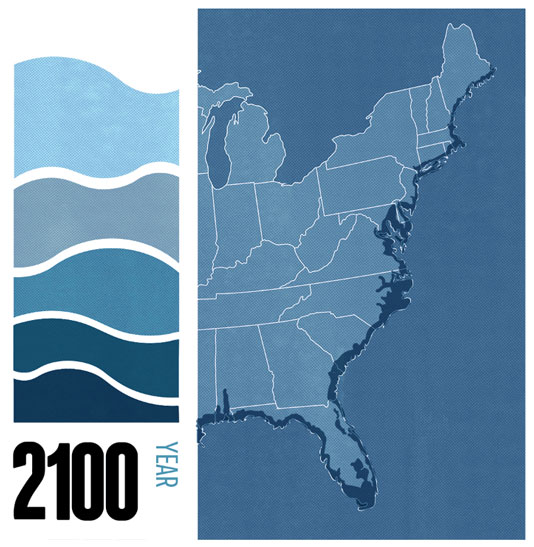 August 9, 2015 (Source: UF) - Sea level rise hot spots -- bursts of accelerated sea rise that last three to five years -- happen along the U.S. East Coast thanks to a one-two punch from naturally occurring climate variations, a new University of Florida study shows.
August 9, 2015 (Source: UF) - Sea level rise hot spots -- bursts of accelerated sea rise that last three to five years -- happen along the U.S. East Coast thanks to a one-two punch from naturally occurring climate variations, a new University of Florida study shows.
After UF scientists identified a hot spot reaching from Cape Hatteras to Miami, they probed the causes by analyzing tidal and climate data for the U.S. eastern seaboard. The new study, published online today in Geophysical Research Letters, shows that seas rose in the southeastern U.S. between 2011 and 2015 by more than six times the global average sea level rise that is already happening due to human-induced global warming.
The study's findings suggest that future sea level rise resulting from global warming will also have these hot spot periods superimposed on top of steadily rising seas, said study co-author Andrea Dutton, assistant professor in UF's department of geological sciences in the College of Liberal Arts and Sciences.
"The important point here is that smooth projections of sea level rise do not capture this variability, so adverse effects of sea level rise may occur before they are predicted to happen," Dutton said. "The entire U.S. Atlantic coastline is vulnerable to these hot spots that may amplify the severity of coastal flooding."
UF News Release












